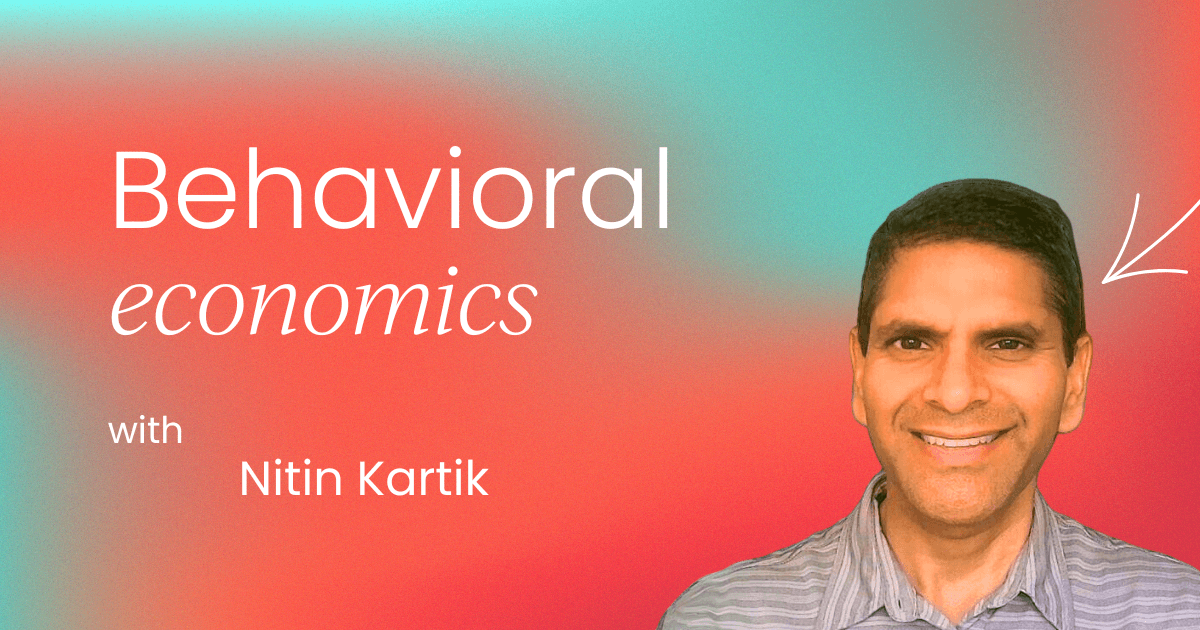In an increasingly competitive market, product marketing has evolved from simple messaging to a sophisticated discipline that taps into deeper human motivations. One of the most powerful tools at a product marketer’s disposal today is behavioral economics.
By understanding cognitive biases, product marketers can craft strategies that resonate more effectively with their audience, driving engagement, retention, and ultimately, growth.
As someone with extensive experience helping drive revenue growth and improve customer retention in my roles at Amazon, Sirius XM, and more, I’ve seen firsthand the impact of behavioral economics on product marketing success.
In this article, I will explore how behavioral economics intersects with product marketing and how understanding cognitive biases can help marketers create more effective strategies.
The intersection of behavioral economics and product marketing
Behavioral economics blends insights from psychology and economics to explain why people sometimes make irrational decisions.
These decisions are influenced by cognitive biases – mental shortcuts that the brain uses to process information more efficiently but which can also lead to errors in judgment. By leveraging these biases, product marketers can create campaigns and messaging that not only grab attention but also lead consumers toward desired actions.
In product marketing, cognitive biases can be employed at various stages, from product development to messaging, pricing, and retention strategies.
Whether you’re aiming to boost conversions, drive engagement, or improve customer retention – as I did by 31% at Amazon – understanding these biases provides invaluable insights into customer behavior.
Key cognitive biases and how to leverage them
Let’s dive into some of the most commonly encountered cognitive biases and how they can be harnessed in product marketing.
1. Anchoring bias
Anchoring occurs when people rely too heavily on the first piece of information they encounter. Once an anchor is established, it becomes a reference point that heavily influences subsequent judgments and decisions.
How to use it in product marketing: In pricing strategies, anchoring is particularly effective. Presenting a higher-priced option first can make other, lower-priced products seem like a better deal, even if the lower-priced product is still relatively expensive.
Apple, for example, effectively uses anchoring by introducing its most premium product first, making other models appear more affordable in comparison.
In my work at TomTom, we leveraged anchoring by positioning premium services as the baseline for customers. This helped create a sense of value around our mid-tier offerings, which ultimately contributed to over $40 million in incremental sales.
2. Loss aversion
Loss aversion refers to people’s tendency to prefer avoiding losses over acquiring equivalent gains. The pain of losing is psychologically twice as powerful as the pleasure of gaining.
How to use it in product marketing: Loss aversion can be a potent tool in retention strategies. Offering limited-time promotions or creating a fear of missing out (FOMO) can spur action. When customers believe they might lose access to something valuable, they are more likely to act quickly.
At Amazon, we tapped into loss aversion to improve retention by offering subscribers special, time-sensitive offers that would disappear if they canceled their membership. This simple strategy combined with others led to a 31% increase in retention.
3. Social proof
Humans are inherently social creatures. Social proof is the psychological phenomenon where people mimic the actions of others in an attempt to reflect correct behavior in a given situation. Essentially, we trust the wisdom of the crowd.
How to use it in product marketing: Incorporating testimonials, reviews, and user-generated content into your campaigns can significantly influence consumer behavior. Highlighting how many people are using your product or service can create a sense of trust and legitimacy.
For example, while working at Sirius XM, I emphasized the 5 million users of our new infotainment service as a key selling point. This created social proof and encouraged even more consumers to adopt the product.

4. Scarcity
Scarcity is a well-documented bias where people assign more value to things that are perceived as scarce or limited. This can be especially effective in driving demand.
How to use it in product marketing: Limited edition products, flash sales, or exclusive offers create a sense of urgency that compels people to act quickly. The perceived scarcity of an item increases its desirability, even if the item isn’t inherently valuable or rare.
Amazon is a master of scarcity marketing. During my time at Audible, we implemented limited-time promotions with countdown timers, which significantly boosted sales during key promotional periods.
5. Endowment effect
The endowment effect is the tendency for people to ascribe more value to things simply because they own them. Once someone has taken ownership of something – either physically or psychologically – they are more reluctant to give it up.
How to use it in product marketing: Free trials or freemium models allow users to “own” or experience a product before committing to purchase. By offering a free trial, you give customers a sense of ownership, making them less likely to abandon the product once the trial ends.
At multiple subscription businesses in my experience, we leveraged the endowment effect by offering a 30-day free trial for our emergency communication platform. Users who became accustomed to the system were more likely to convert into paying customers after the trial ended.
6. Framing effect
The framing effect refers to how people react differently to the same information depending on how it’s presented. Positive framing tends to encourage more favorable outcomes, while negative framing can deter actions.
How to use it in product marketing: The way you frame product benefits or features can significantly influence customer perceptions. Highlighting what users will gain from using your product rather than what they might lose can result in better engagement and conversion.
In my work at RapidSOS, framing our product’s capabilities in terms of the “lives saved” rather than just “improved response times” resulted in more emotional resonance with our target audience, helping us achieve 5X annual revenue growth.
7. Confirmation bias
Confirmation bias is the tendency to search for, interpret, and remember information in a way that confirms one’s pre-existing beliefs or assumptions.
How to use it in product marketing: Product marketers can tap into confirmation bias by aligning their messaging with the values or beliefs of their target audience. By reinforcing what your audience already believes, you can increase the likelihood of engagement and conversion.
For example, at RapidSOS, we leaned into public safety’s mission-driven values to resonate with partners. By framing our product as a solution that supported their commitment to saving lives, we forged 20 key revenue partnerships in less than a year.
Bridging behavioral economics and data-driven marketing
While cognitive biases provide a powerful framework for understanding consumer behavior, it’s important to complement these insights with data-driven strategies. Behavioral economics should not be applied in isolation but should instead work hand-in-hand with quantitative data to create a holistic product marketing strategy.
For instance, customer behavior data – whether it’s click-through rates, user engagement metrics, or churn analysis – can reveal how cognitive biases are playing out in real-time. During one of my roles, I utilized both behavioral insights and data analytics to inform product marketing strategies, leading to a 124% increase in US revenue.
Conclusion
As product marketers, our job is not just to understand the features and benefits of the products we promote.
We must also understand the psychological factors that drive our customers to make decisions. By tapping into cognitive biases such as anchoring, loss aversion, and social proof, we can create more compelling and effective product marketing campaigns.
In a world where consumers are bombarded with choices, understanding the subtleties of human behavior can be the difference between a successful product launch and one that falls flat.
Incorporating behavioral economics into your product marketing strategy can help you better connect with your audience, improve customer retention, and drive growth – just as I’ve done in my own career.


















 Follow us on LinkedIn
Follow us on LinkedIn




.svg?v=c737bc5930)